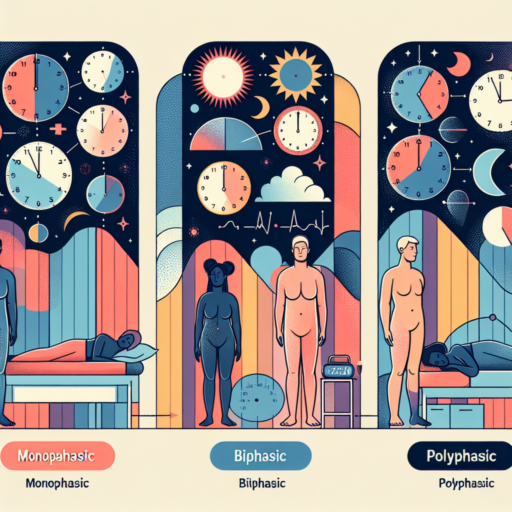Can I sleep 4 hours twice a day?
Many wonder about the effects of splitting their sleep schedule into two shorter periods, commonly referred to as biphasic sleep. Sleeping for 4 hours twice a day might sound unorthodox to some, but it aligns closely with natural sleep patterns observed before the modern era. This approach to rest might offer an alternative for those who find a traditional 8-hour night’s sleep elusive.
In examining the concept of biphasic sleep, it’s crucial to evaluate how it fits within the body’s natural circadian rhythms. Our internal clocks are designed for periods of rest and activity, suggesting that two shorter sleeps could be more natural than one long overnight sleep. This pattern can also be particularly appealing for those with demanding schedules, offering a way to recharge effectively mid-day.
However, adapting to a biphasic sleep schedule requires careful consideration of one’s lifestyle and health needs. For instance, ensuring that each 4-hour sleep session is of high quality is paramount. Factors such as sleep environment, light exposure, and avoiding stimulants before bedtime play crucial roles in achieving restorative sleep, whether during the day or at night.
What are the 4 sleep cycles per night?
Understanding the sleep cycles is crucial for recognizing how sleep affects our overall health, mood, and cognitive function. Each night, the human body undergoes four distinct sleep cycles, each essential for rejuvenating and refreshing the mind and body for the day ahead.
NREM Stage 1
The first stage of sleep, known as the NREM (Non-Rapid Eye Movement) Stage 1, is essentially the transition phase from wakefulness into sleep. This stage is short, typically lasting from one to five minutes, and it’s characterized by light sleep. During this time, the body begins to relax, muscle activity decreases, and the person can be easily awakened.
NREM Stage 2
Moving deeper into sleep, NREM Stage 2 marks the onset of actual sleep. This stage can last for approximately 10 to 25 minutes during the first cycle, extending during the night. It’s during this phase that the body continues to slow down, with decreases in heart rate and body temperature. Sleep spindles, which are sudden bursts of oscillatory brain activity, occur at this stage, believed to play a key role in consolidating memories and learning.
NREM Stage 3 and REM Sleep
The third stage, known as NREM Stage 3, is the deepest phase of sleep, where the body undergoes significant restorative processes. This stage lasts around 20 to 40 minutes. It’s crucial for physical recovery, immune system strengthening, and growth hormone release. Following NREM Stage 3, the cycle culminates in REM (Rapid Eye Movement) Sleep, where brain activity increases, dreams occur, and memory consolidation continues. This final phase lasts about 10 to 60 minutes, getting progressively longer towards the morning.
No se han encontrado productos.
What is the healthiest sleep schedule?
Identifying the healthiest sleep schedule is imperative for both physical and mental well-being. The concept commonly revolves around the circadian rhythm, which suggests that sticking to a consistent wake-up and sleeping time aligns closely with our natural biological clock. This synchronization facilitates better sleep quality and overall health. Most adults benefit significantly from 7 to 9 hours of sleep per night, though the optimal amount can slightly vary among individuals.
It’s also essential to consider the quality of sleep, not just the duration. A healthy sleep schedule promotes uninterrupted sleep cycles, including the necessary proportions of deep sleep and REM sleep. Establishing a routine that encourages a restful night without frequent awakenings is crucial for achieving the restorative benefits of sleep, such as memory consolidation and muscle repair.
Adjustments to one’s sleep schedule can yield profound benefits. For instance, adhering to a regular bedtime and wake-up time even on weekends helps to minimize social jetlag, improving overall mood and metabolic health. Avoiding stimulants such as caffeine and electronic devices before bedtime can further enhance the quality of sleep, making it easier to wake up feeling refreshed and ready for the day ahead.
Is polyphasic sleep healthy?
The question of whether polyphasic sleep is healthy is complex and demands an in-depth look at both the potential advantages and concerns associated with this sleep pattern. Polyphasic sleep involves breaking down the typical nightly sleep into multiple short naps distributed throughout the day. Proponents argue it can increase wakeful productivity, but health experts often express reservations.
Health Benefits: Some proponents of polyphasic sleep claim that it can enhance cognitive performance and productivity by allowing for more wakeful hours. There’s been anecdotal evidence suggesting that famous historical figures such as Leonardo da Vinci and Napoleon Bonaparte successfully followed this sleep pattern, leveraging shorter periods of sleep to maximize their creative and productive output. However, it’s important to note that individual responses to sleep deprivation vary significantly, and what worked for one individual may not be beneficial for another.
Potential Risks: Health professionals often highlight the risks associated with polyphatic sleep. One major concern is that it can lead to chronic sleep deprivation if the total amount of sleep is significantly reduced. This is because polyphasic sleep schedules can disrupt the body’s natural circadian rhythms, potentially leading to negative health outcomes such as decreased immune function, impaired cognitive abilities, and increased stress levels. Furthermore, there is a lack of long-term research on the effects of polyphasic sleep, making it difficult to fully understand the potential health implications.




